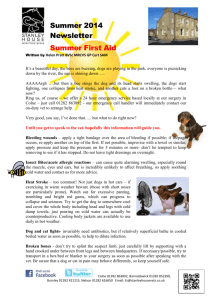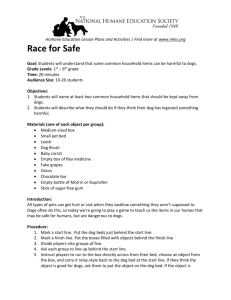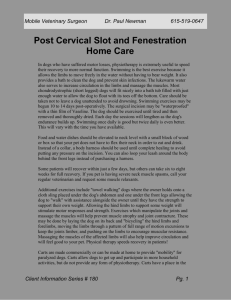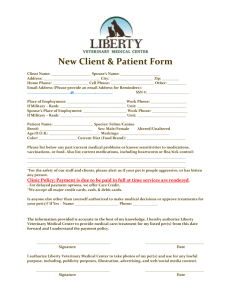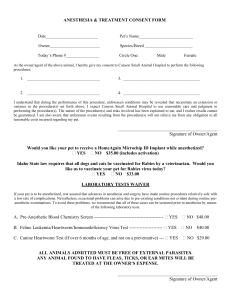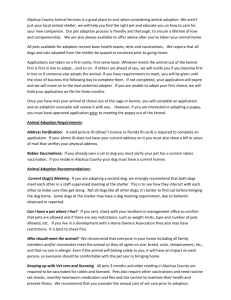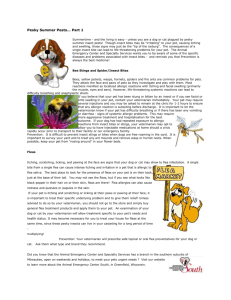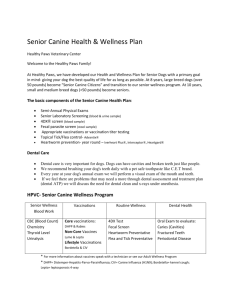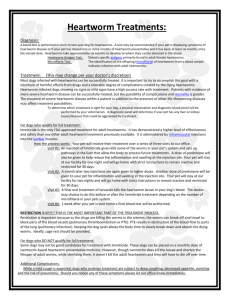pet passport - dogs and cats travelling abroad – important disease
advertisement
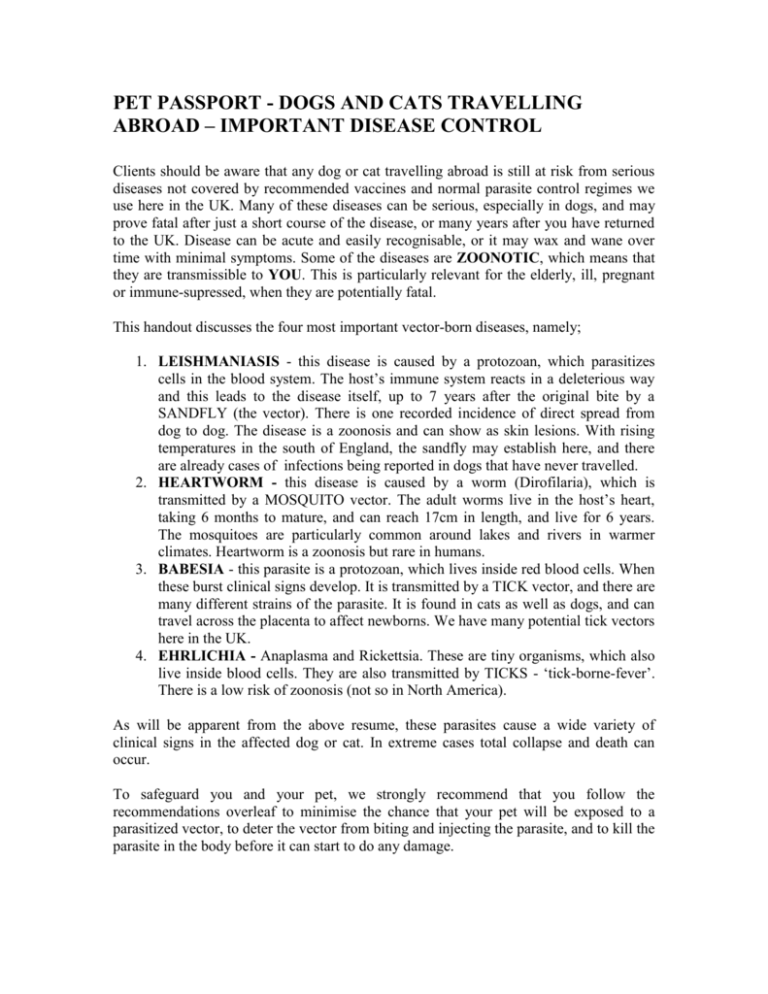
PET PASSPORT - DOGS AND CATS TRAVELLING ABROAD – IMPORTANT DISEASE CONTROL Clients should be aware that any dog or cat travelling abroad is still at risk from serious diseases not covered by recommended vaccines and normal parasite control regimes we use here in the UK. Many of these diseases can be serious, especially in dogs, and may prove fatal after just a short course of the disease, or many years after you have returned to the UK. Disease can be acute and easily recognisable, or it may wax and wane over time with minimal symptoms. Some of the diseases are ZOONOTIC, which means that they are transmissible to YOU. This is particularly relevant for the elderly, ill, pregnant or immune-supressed, when they are potentially fatal. This handout discusses the four most important vector-born diseases, namely; 1. LEISHMANIASIS - this disease is caused by a protozoan, which parasitizes cells in the blood system. The host’s immune system reacts in a deleterious way and this leads to the disease itself, up to 7 years after the original bite by a SANDFLY (the vector). There is one recorded incidence of direct spread from dog to dog. The disease is a zoonosis and can show as skin lesions. With rising temperatures in the south of England, the sandfly may establish here, and there are already cases of infections being reported in dogs that have never travelled. 2. HEARTWORM - this disease is caused by a worm (Dirofilaria), which is transmitted by a MOSQUITO vector. The adult worms live in the host’s heart, taking 6 months to mature, and can reach 17cm in length, and live for 6 years. The mosquitoes are particularly common around lakes and rivers in warmer climates. Heartworm is a zoonosis but rare in humans. 3. BABESIA - this parasite is a protozoan, which lives inside red blood cells. When these burst clinical signs develop. It is transmitted by a TICK vector, and there are many different strains of the parasite. It is found in cats as well as dogs, and can travel across the placenta to affect newborns. We have many potential tick vectors here in the UK. 4. EHRLICHIA - Anaplasma and Rickettsia. These are tiny organisms, which also live inside blood cells. They are also transmitted by TICKS - ‘tick-borne-fever’. There is a low risk of zoonosis (not so in North America). As will be apparent from the above resume, these parasites cause a wide variety of clinical signs in the affected dog or cat. In extreme cases total collapse and death can occur. To safeguard you and your pet, we strongly recommend that you follow the recommendations overleaf to minimise the chance that your pet will be exposed to a parasitized vector, to deter the vector from biting and injecting the parasite, and to kill the parasite in the body before it can start to do any damage. Please follow the recommendations below 1. Apply monthly FRONTLINE COMBO SPOT-ON to your cat or new CERTIFECT to your dog. This should be started 24 hours before arrival in the risk area. 2. Give monthly MILBEMAX worming tablets to prevent continental worms, in particular heartworm. Treatment must start within 1 month of exposure to mosquitoes and continue for at least one month after return to the UK - preferably for 3 consecutive months before resuming a normal 3 monthly dose. (Milbemax also contains praziquantel, the tapeworm drug required to be given by a vet before returning to the UK on the Pet Passport. It may be worth remembering this when working out your medicine regime.) 3. Use insect repelling coils, plug-ins, collars and shampoos to try and repel biting insects. We recommend you put a SCALIBOR COLLAR on for your dog and a SERESTO COLLAR on for your cat before you travel. Scalibor is not licensed for cats and has the added benefit of protecting against Sandflies. It lasts 6 months. Seresto lasts 8 months. 4. Keep your pet indoors at dawn and dusk where possible, as this is when Sandflies are most likely to bite, although some species have adapted to biting during the day. 5. Animals (and people) should sleep behind insect-proof screens / nets wherever possible, either indoors or outdoors. 6. Try to avoid forest and rough grazing wherever possible, to avoid Sandflies and ticks. Mosquitoes are most prevalent around surface water, so use plenty of repellent around lakes and rivers. 7. VACCINATIONS - some are available in certain countries against Babesia but they are by no means totally protective. There is now a new vaccine for Leishmaniasis for dogs. It can be given from 6 months of age. The primary course is 3 injections 3 weeks apart and your dog is protected 4 wks after the course. One injection is then repeated annually. If your dog has been in a susceptible area it is recommended to test for antibodies prior to vaccination. Please refer to the map in the attached leaflet. Despite all these precautions, you should still inspect your animal every day. Look for any signs of illness, and search for any attached ticks especially underneath or between the legs. These should be removed as soon as possible with a special TICK HOOK to avoid leaving mouthparts behind which may lead to skin lumps and infection. FRONTLINE SPRAY can also be used to kill them. Use gloves to spray it directly on the tick, or apply via a cotton-wool pad soaked with Frontline to ticks on the face and ears to avoid the eyes and distress to your pet. If you have any concerns, you should contact the local veterinary surgeon - delaying could make any disease more severe, and could pose a risk to your own health. We hope that you have found this handout helpful, clear and interesting, but please feel free to ask our vets if you have any further concerns. One final thing to consider before travelling is insurance for your pet - you may need to check with your insurance company or take out a supplementary cover. Above all, have a safe and happy holiday with your pet.
